Definition and mechanism
Japanese curtains consist of fabric panels with special weights at the bottom of the panels, which move along the cornice using different types of control.
Features of panel curtains
Like all types of curtains, they have their own aesthetic and functional characteristics.
- Easy to use and maintain.
- A special fastening allows you to use them not only as decoration for a window opening, but also as a partition for dividing a room.
- Thanks to the design of several panels, you can combine the panels in any order and create stylish and interesting images.
- Thanks to their laconic appearance, they take up a minimum of space.
Material
Artificial and natural materials are used to make Japanese curtains.
Bamboo
They do not accumulate dust and are very easy to care for. According to Feng Shui, they absorb negative energy and do not allow it to enter the house. They will fit especially well into an interior in an oriental or eco style with thematic design details.
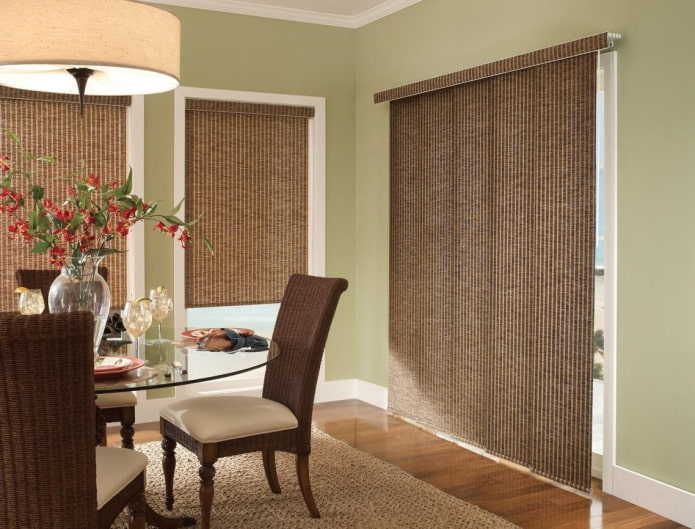
Linen
Practical and comfortable. Perfect for any layout, combined with ceramics and wood, linen panels are aesthetics and harmony.
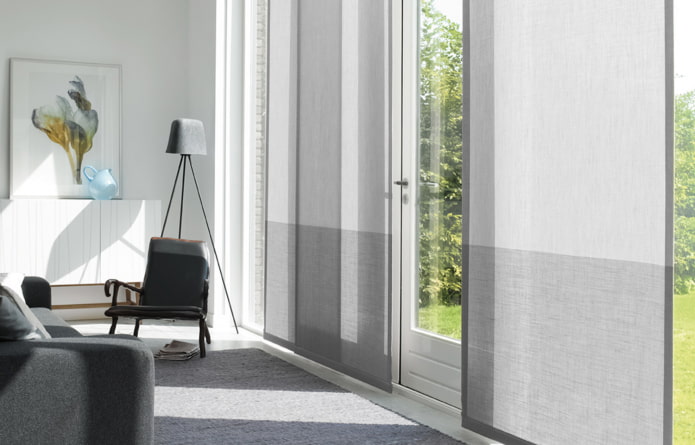
Organza
Japanese style organza curtains are sophistication without unnecessary details. For all those who like oriental exoticism, this fabric will help to create the right mood in the room.
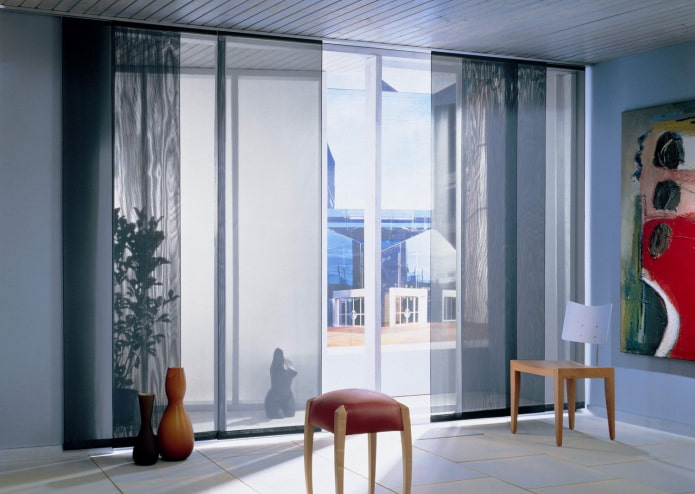
Plastic
For modern solutions, panels made of thin plastic have been invented. Exquisitely simple and strict. They fit perfectly into minimalist interiors, giving them a special style.
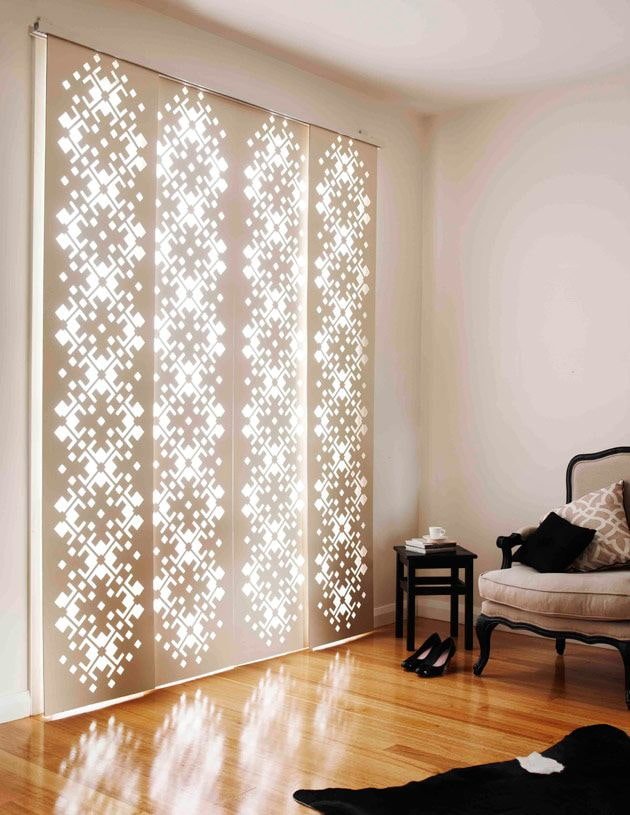
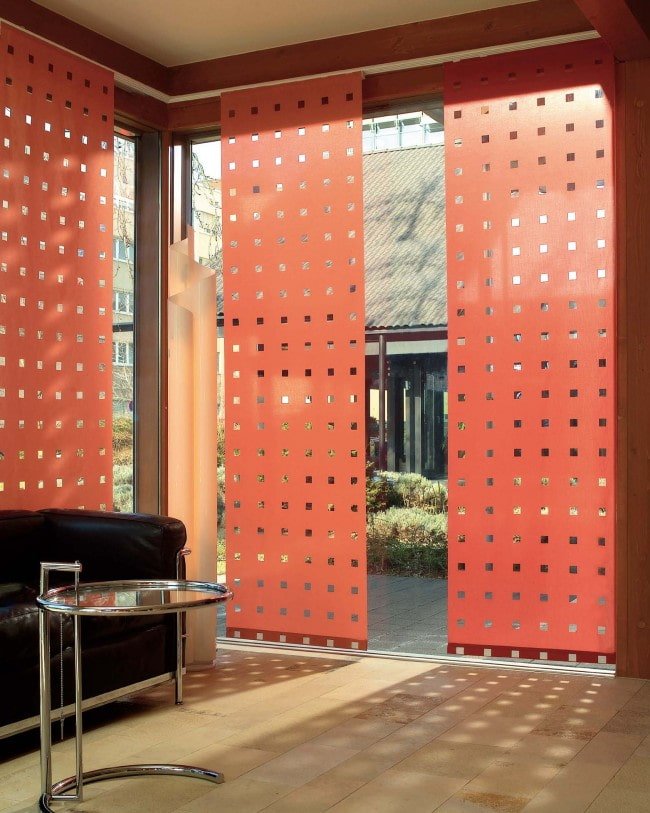
Silk
Mysterious and sophisticated. It always looks interesting and attractive. Silk curtains will make the room especially stylish.
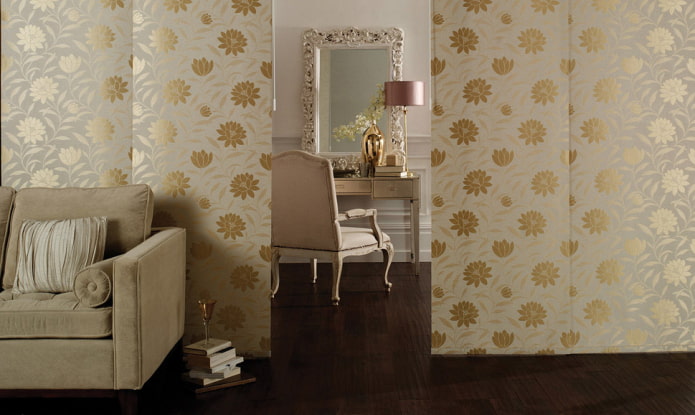
Satin
It can be plain or with patterns. Allows you to achieve an original and unique look. Various shades and colors make it possible to choose the most suitable combination for interior design.
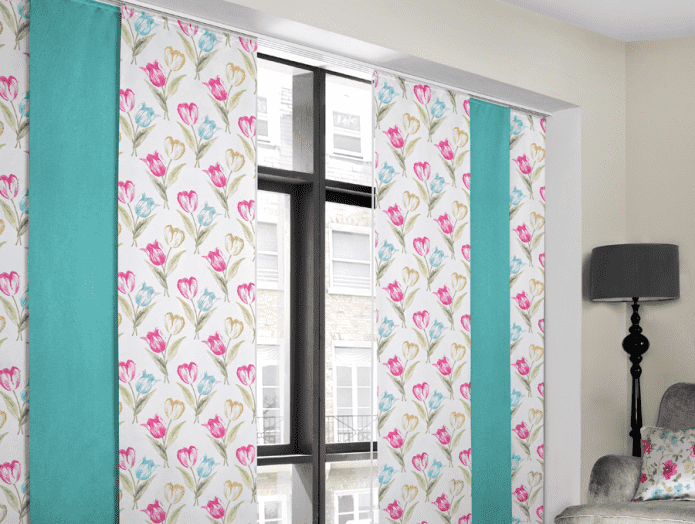
Rice paper
They let in a lot of light and give the room a special flavor that is appreciated by many connoisseurs and lovers of Japanese style.
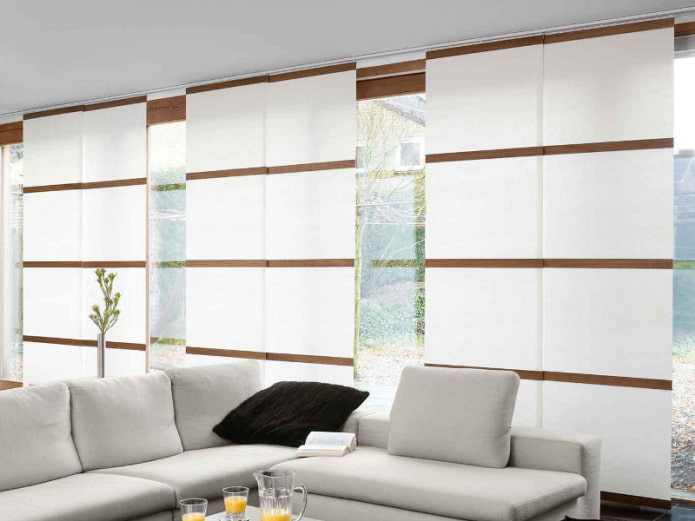
Blackout
Vertical panels made of this type of fabric look strict and stylish, and When unfolded, they completely isolate the space from external light.
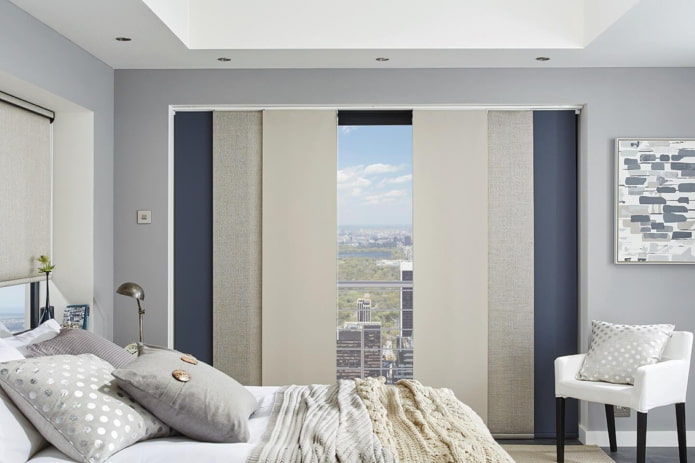
Curtain sizes
Japanese panels are only short or long to the floor, all other shapes are excluded.
Long
They can be both an element of decor for windows, and an excellent solution for decorating niches, walls, doorways, or can be used as cabinet doors.
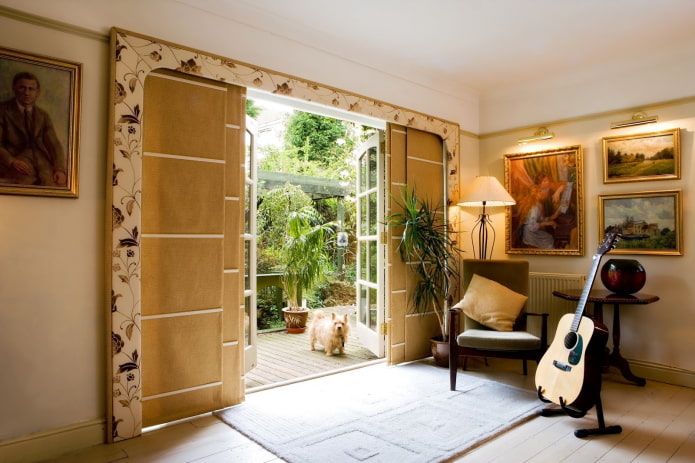
The photo shows long Japanese curtains in the living room interior.
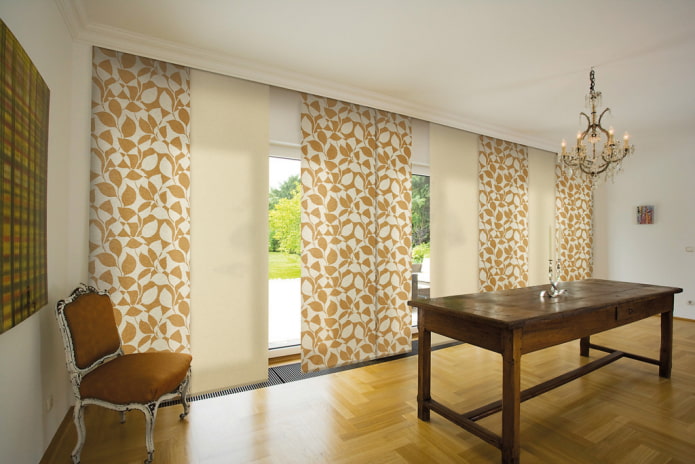
Short
Translucent short curtains to the windowsill made of plain light material are suitable for small windows. They can visually expand the window opening and give a feeling of abundance of space and air.
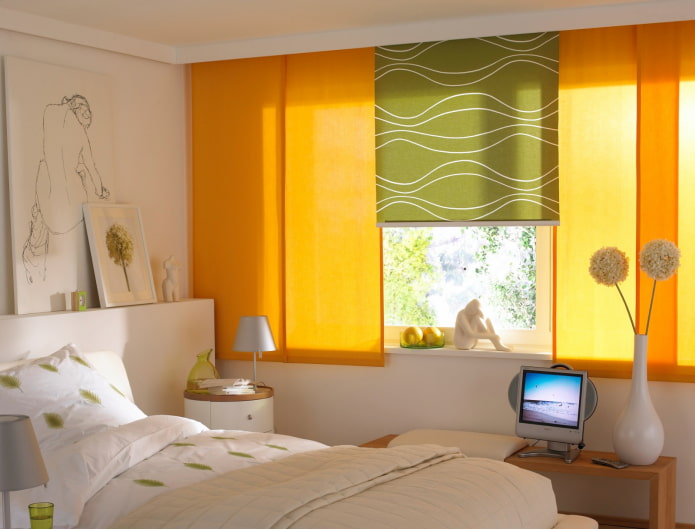
The photo shows the interior of a small bedroom with a window decorated with short Japanese curtains.
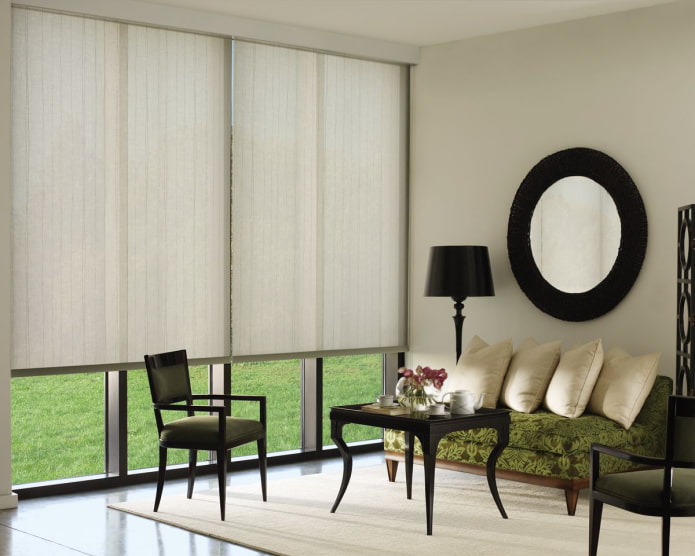
Photos in the interior of rooms
Japanese curtains provide unlimited freedom in the design of any room.
Kitchen
They are often used for spacious kitchens. They are practical, so they are ideal for this far from ideally clean room. And due to their laconicism and simplicity, they will fit into any design and complete the overall concept of the interior.
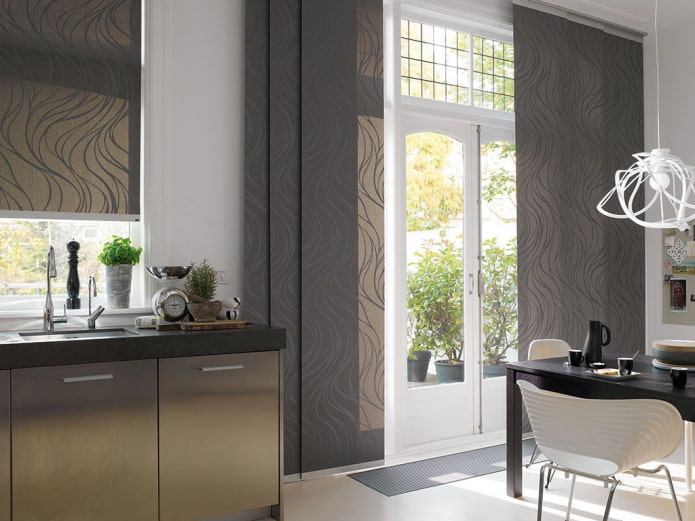
The photo shows a kitchen decorated with brown Japanese panels.
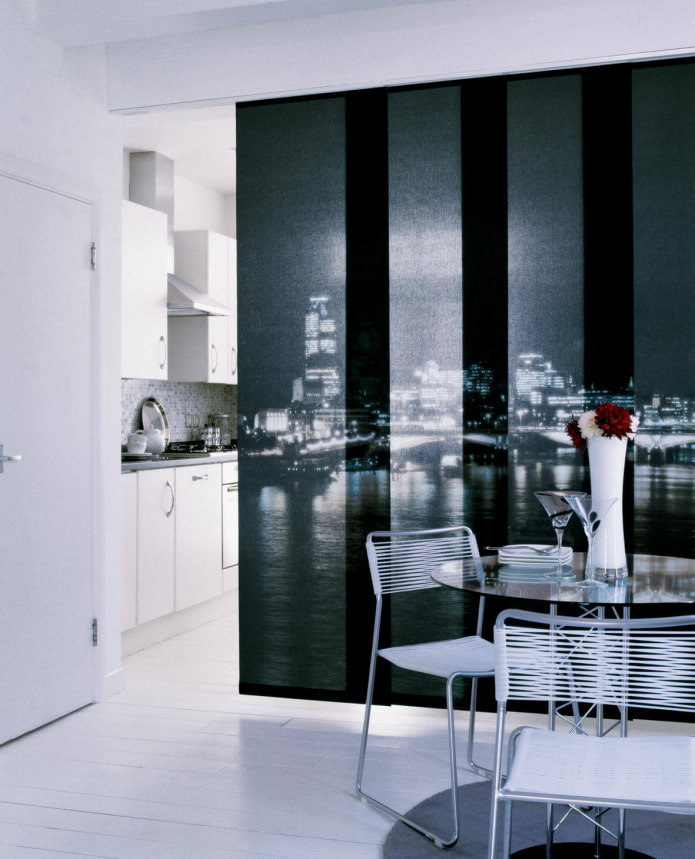
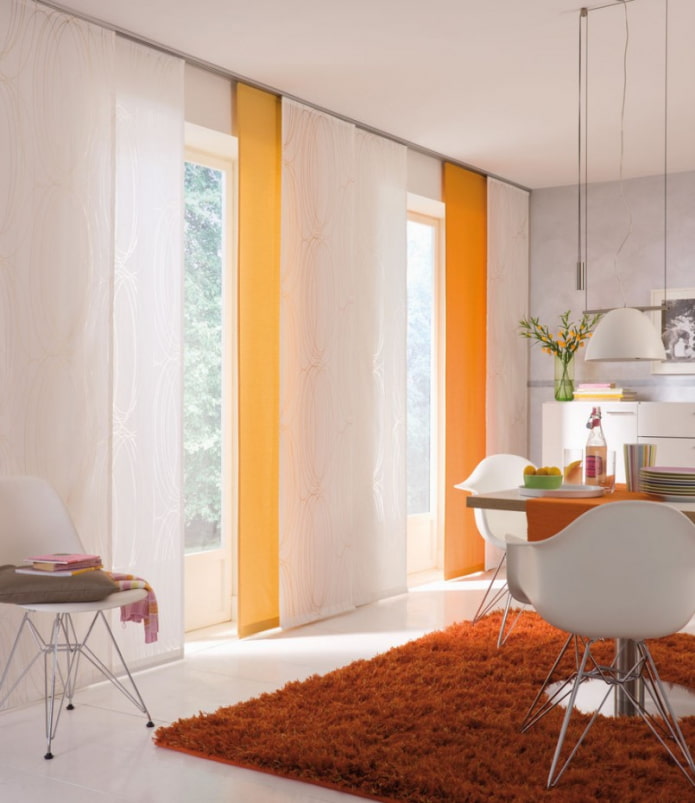
Bedroom
Pastel and muted tones are chosen for bedrooms, which echo nature. Canvases made of natural materials with dust-repellent properties will become a reliable protection against allergic reactions.
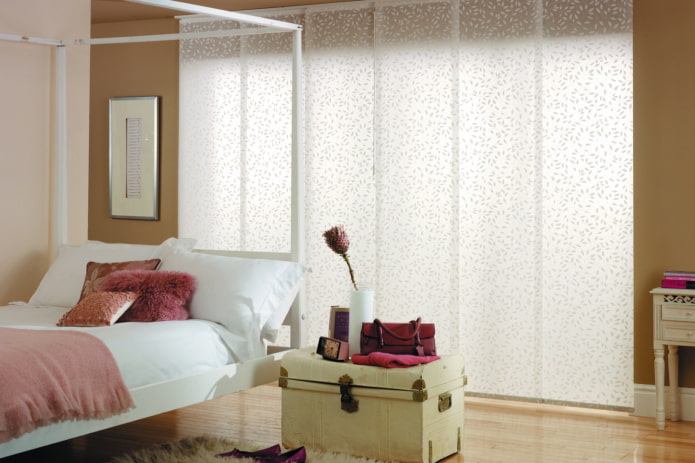
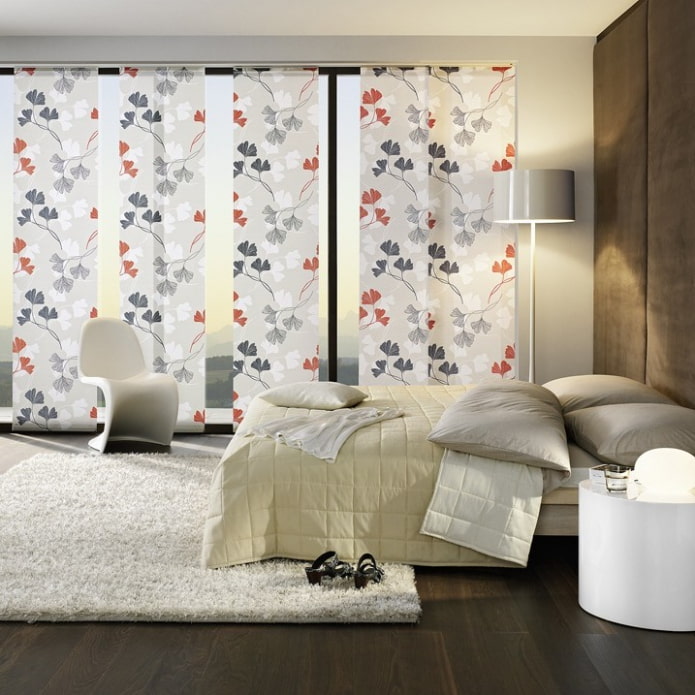
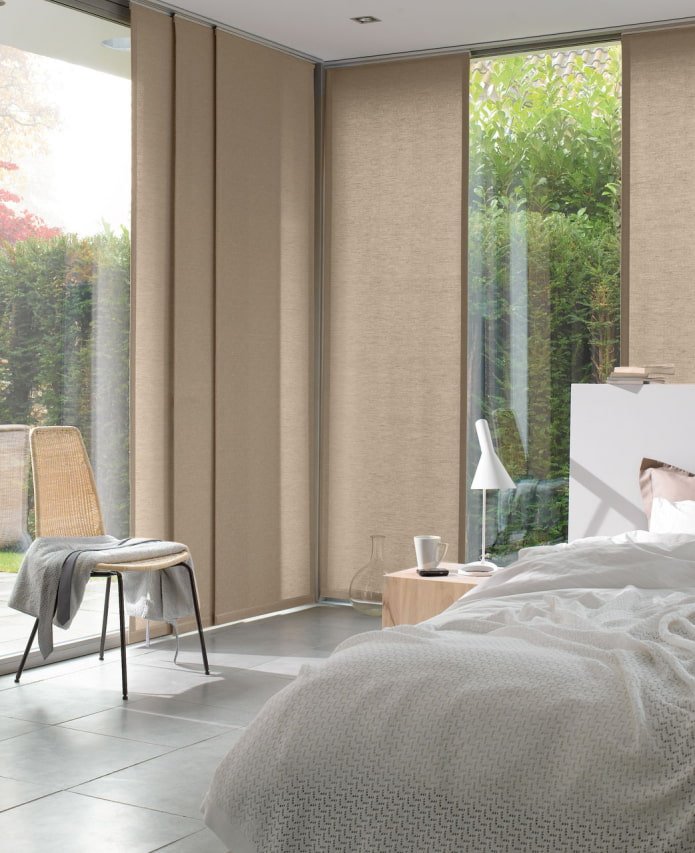
Children’s room
When decorating a window in a child’s room, you can create a special mood in the room using various prints. The design is also used to separate the room into a rest and play area or acts as a partition for a room shared by two children.
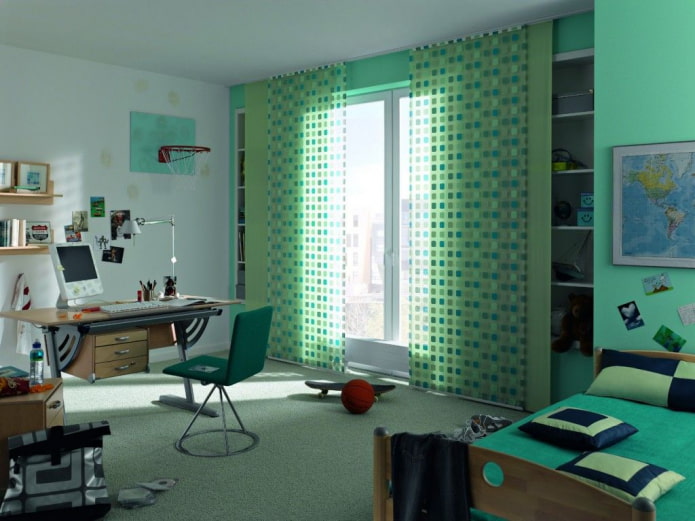
The photo shows a child’s room and green Japanese curtains with a geometric pattern.
Living room or hall
The overall design of the products and the material are selected to match the style of the interior. Most often, long canvases with a floral or geometric pattern are used. Sometimes the panels are combined with other curtains, such compositions perfectly match the interior items of the living room.
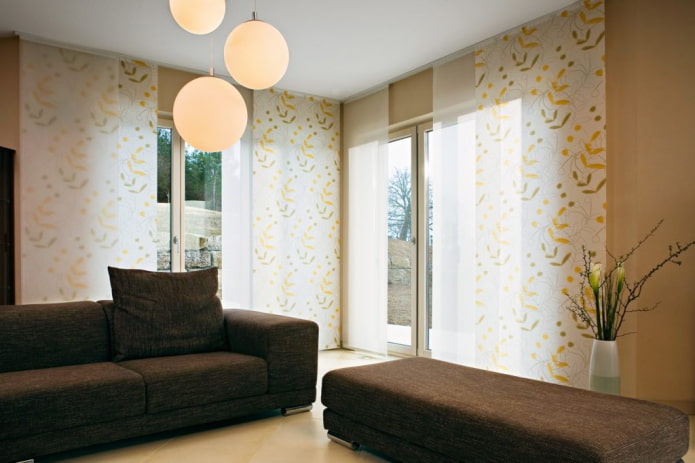
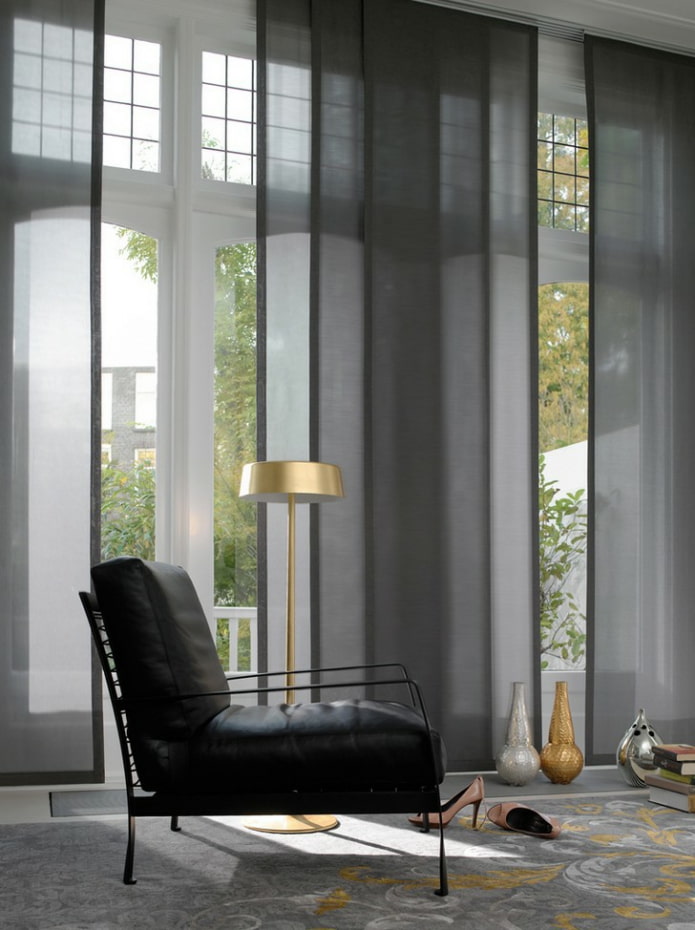
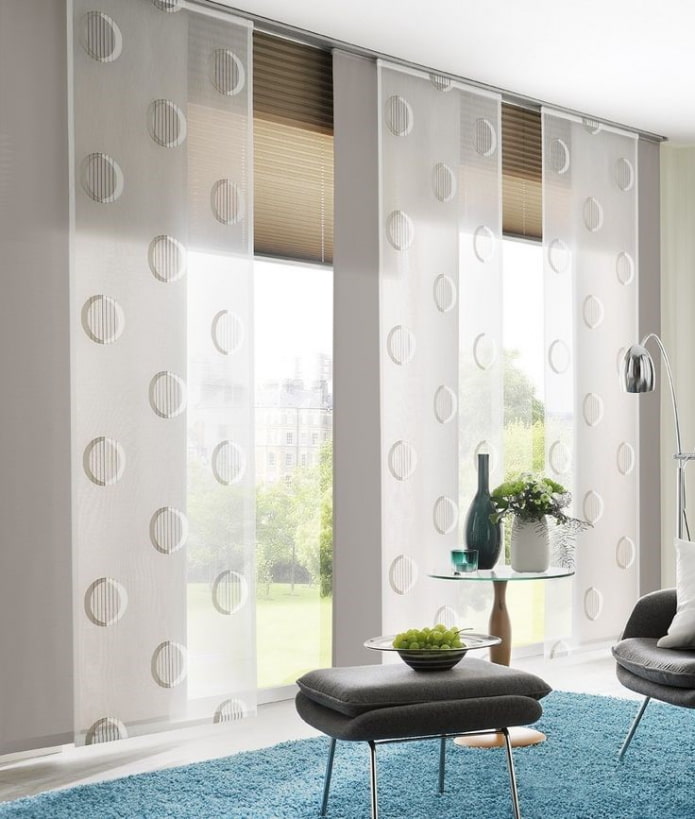
Balcony and loggia
They will protect from sunlight and strong heating. The choice of color and pattern can affect the perception of the geometry of the balcony. Light shades will expand the space, dark shades will make it smaller and cozier.
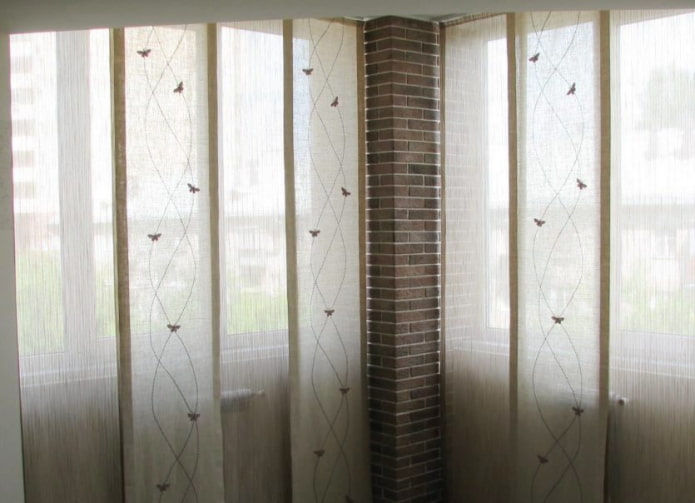
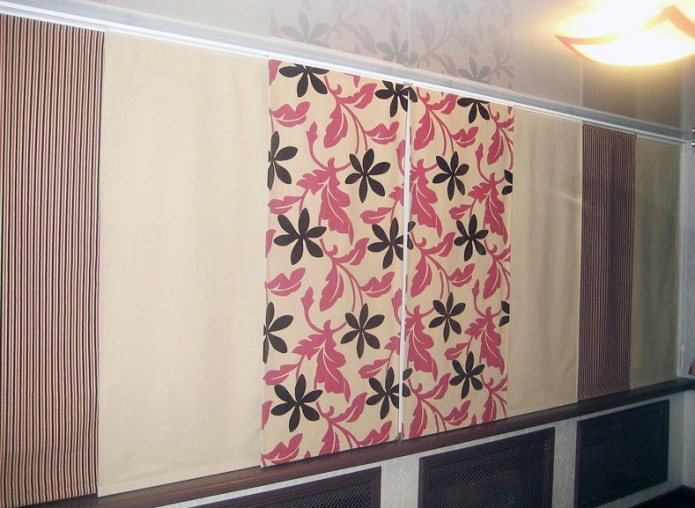
Interior
Japanese panels are not only utilitarian and beautiful curtains, they are also used to create sliding partitions or replace interior doors and piers.
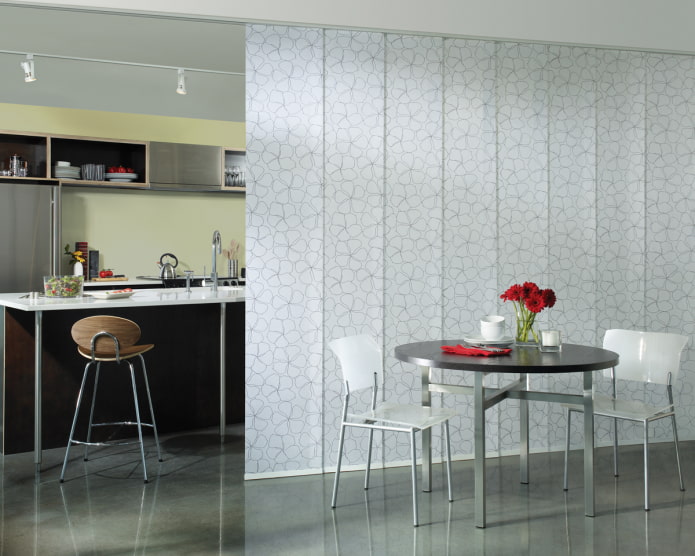
Wardrobe
It will allow you to solve several problems, in particular, to elegantly close the entrance to the dressing room, use thick curtains instead of a screen or fence off an area for placing a mirror.
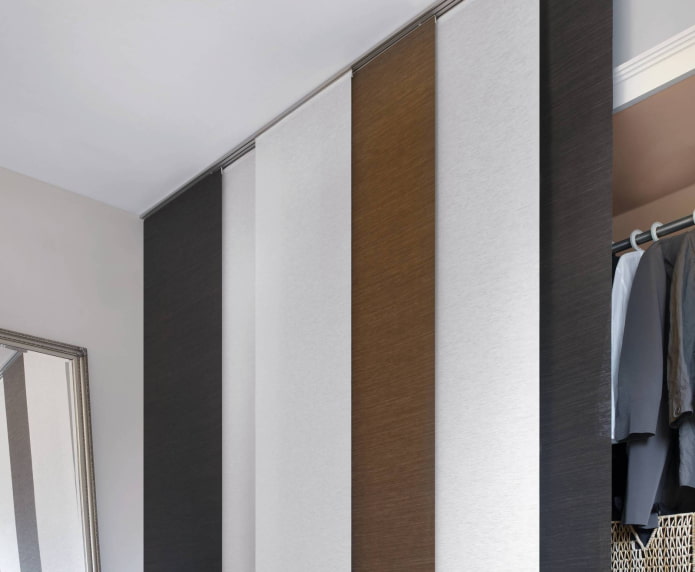
For a bay window
Smooth panels of Japanese curtains, in the design Bay windows take up a minimum of space and do not overload the interior of the room.
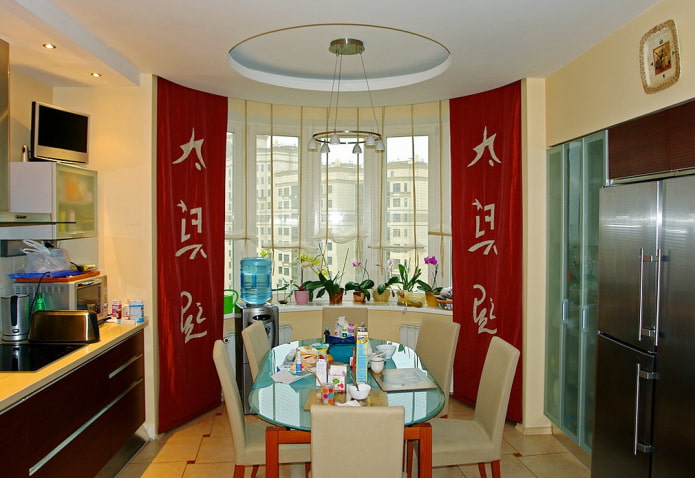
Color scheme
Japanese canvases will look even more harmonious in the interior if you choose not only the texture, but also the color correctly.
Brown
A multifaceted, rich, but at the same time neutral color. It is not dominant. Brown is a natural shade that is suitable for elegant and respectable interiors.
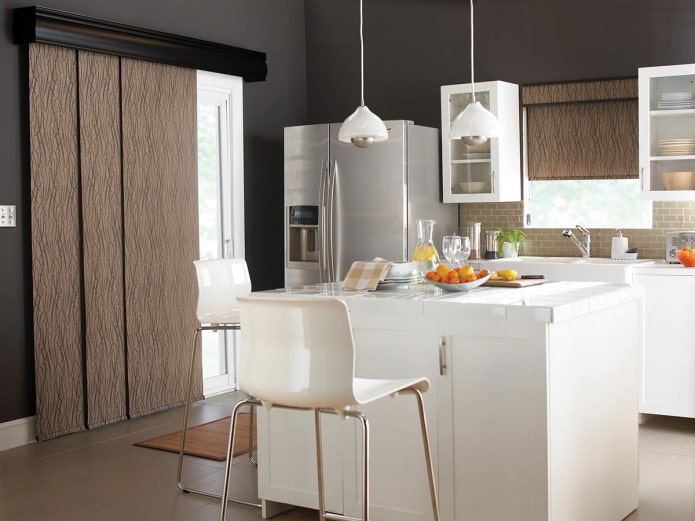
Gray
In order not to get too dull and conservative atmosphere in the room, when choosing such a color you need to know the sense of proportion and carefully think through each shade and color combination.
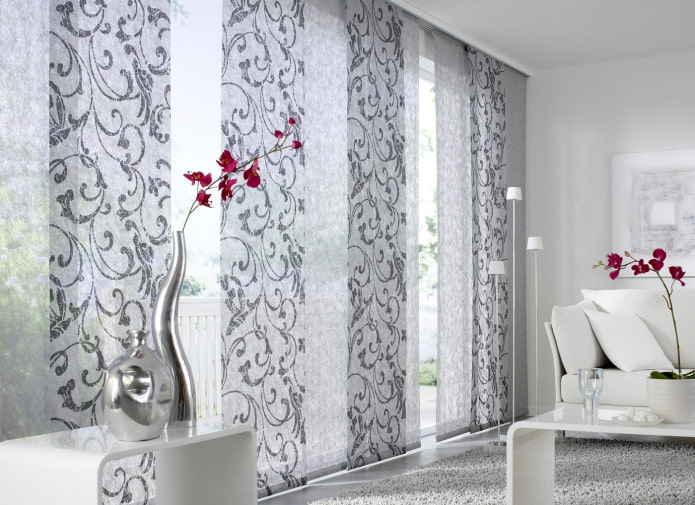
Green
The color of tranquility, saturates the space with a natural theme. Green Japanese curtains create a positive perception of the outside world and the interior as a whole.
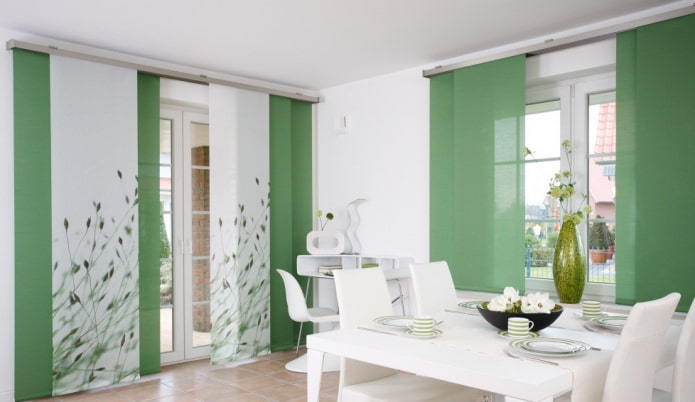
The photo shows a white dining room and green Japanese curtains on the windows.
White
This is a sign of excellent taste and elegance, because it goes well with any interior and color of furniture, and also gives the living space a festive look.
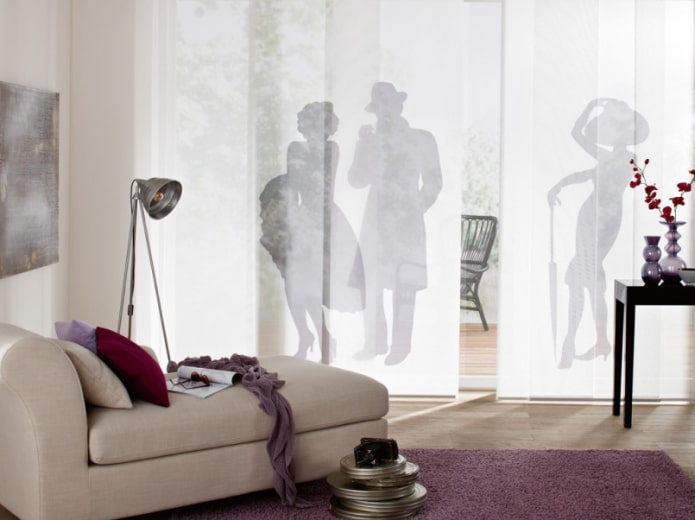
Black and white
The pinnacle of classics, the absolute peak of harmony. Combines with a variety of bright or muted interior palettes. The black and white combination gives the design a strict conciseness and an incredibly luxurious look. It can be both a background and an accent.
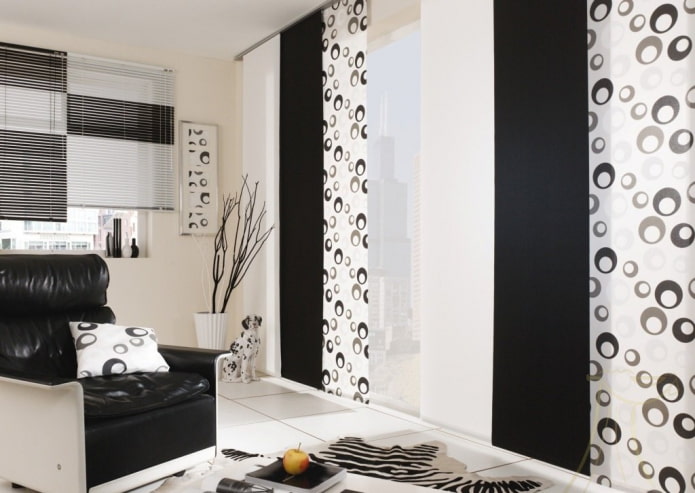
Purple
A stunning, deep, rich and incredibly picturesque color that undoubtedly attracts attention.
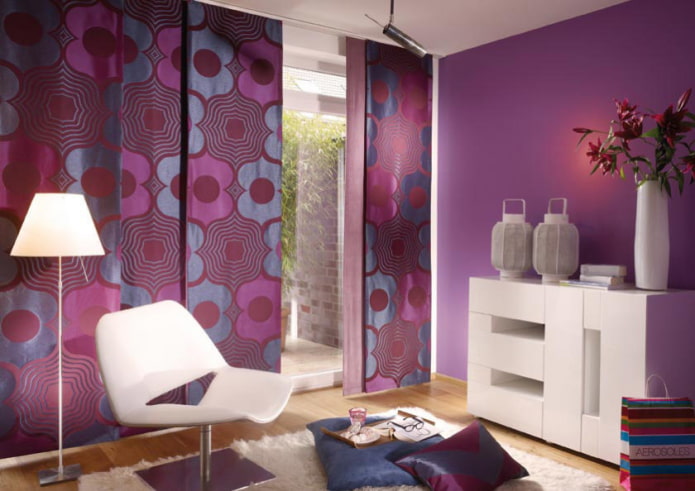
Pink
Mobilizes and tones, gives ample opportunities to express your taste. It can create a dreamy mood, promotes relaxation well.
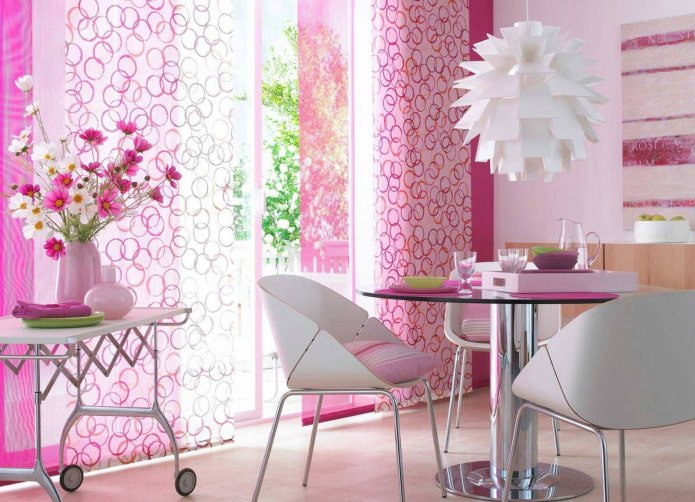
Beige
It will fill the design with special aesthetics, give completeness and allow you to add more coziness and comfort to a cool or dark interior.
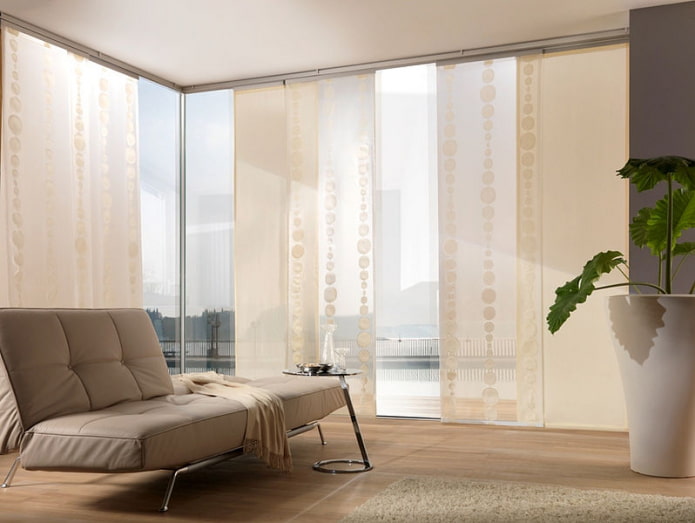
The photo shows a living room in light colors with beige Japanese curtains on the window.
Drawings and design curtain panels
They create a special atmosphere and allow you to further emphasize the idea of style.
See how roller blinds look in the interior.
Monochrome
The traditional and laconic option does not draw attention to itself and does not stand out from the general background. Most often used to decorate rooms such as a bedroom or living room.
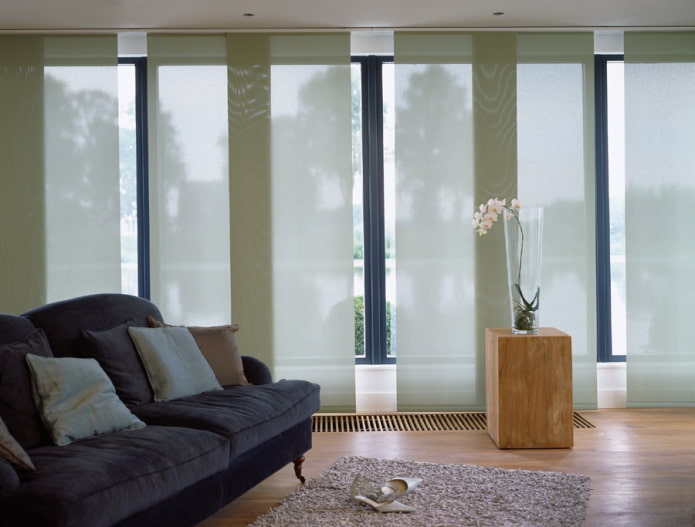
Flowers and vegetation
Floral and plant patterns give a feeling of calm. For example, in Japan, an orchid in the interior creates an atmosphere of tranquility and influences the perception of space, highlighting the advantages and hiding the disadvantages of the interior.
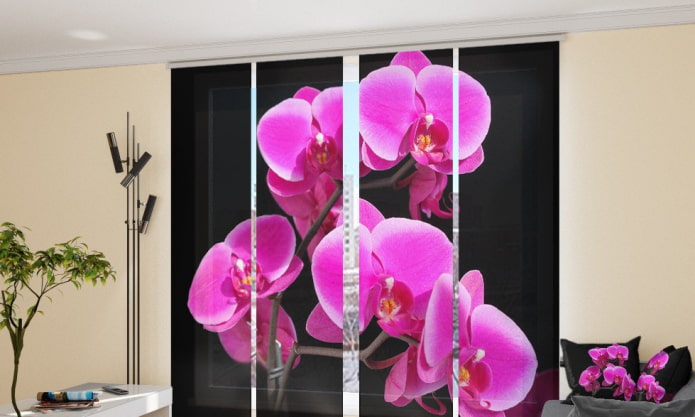
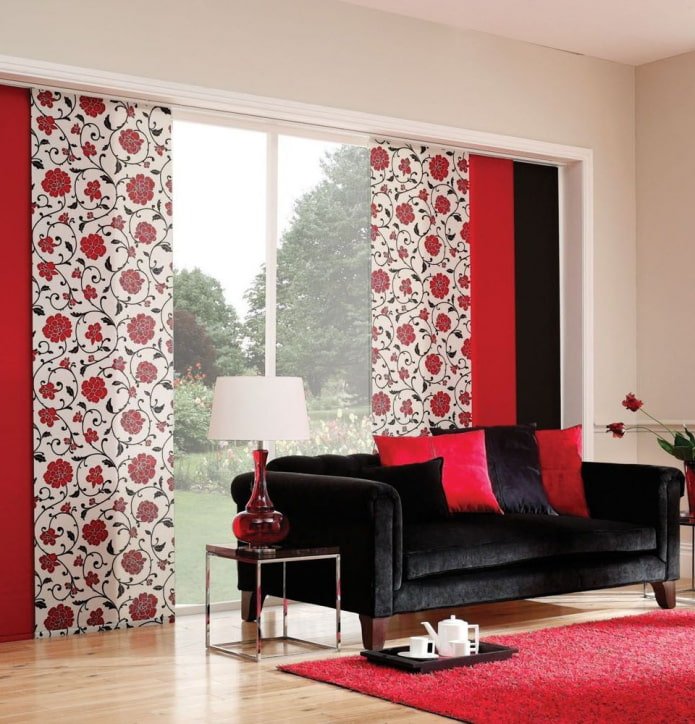
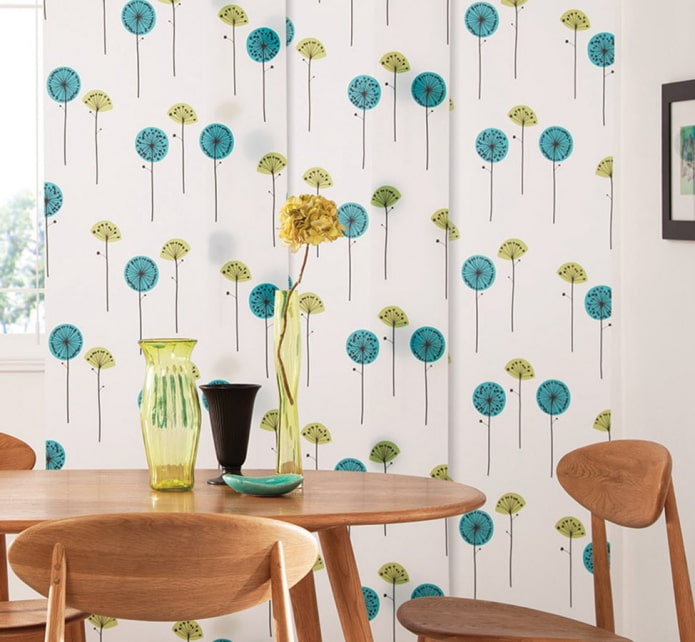
Openwork
These thin, filigree patterns are perfect for a room like a bedroom. They will make it more soaring, cozy and truly exclusive.
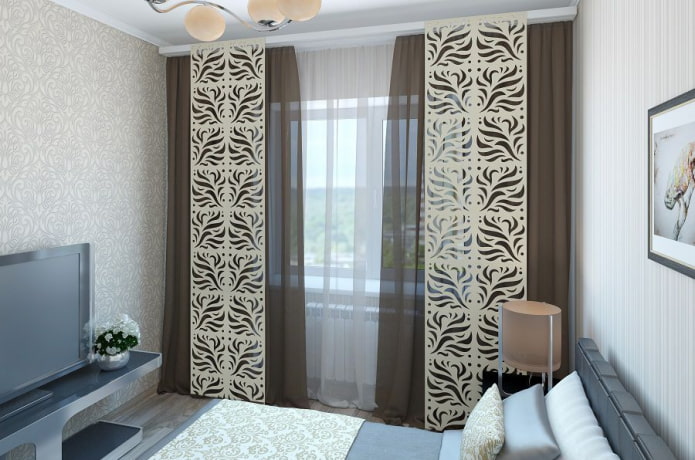
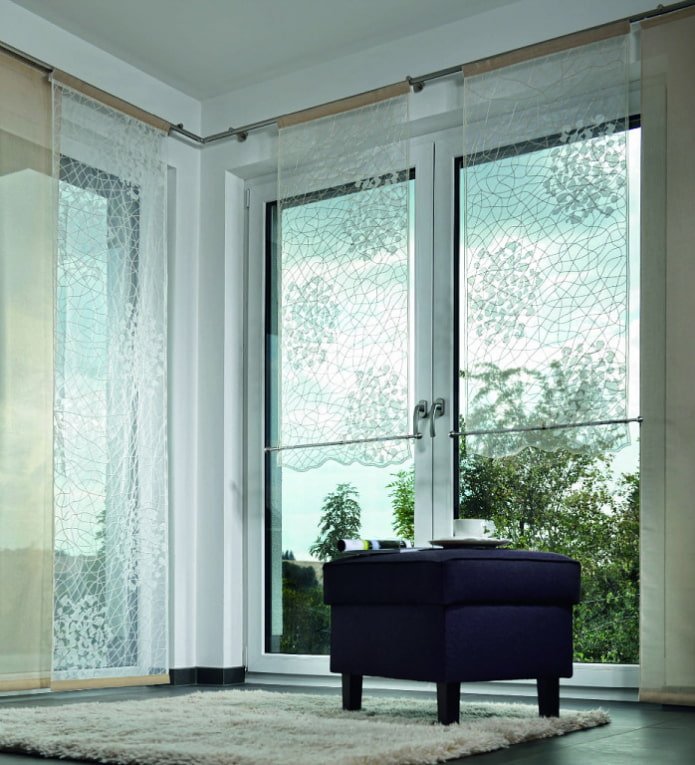
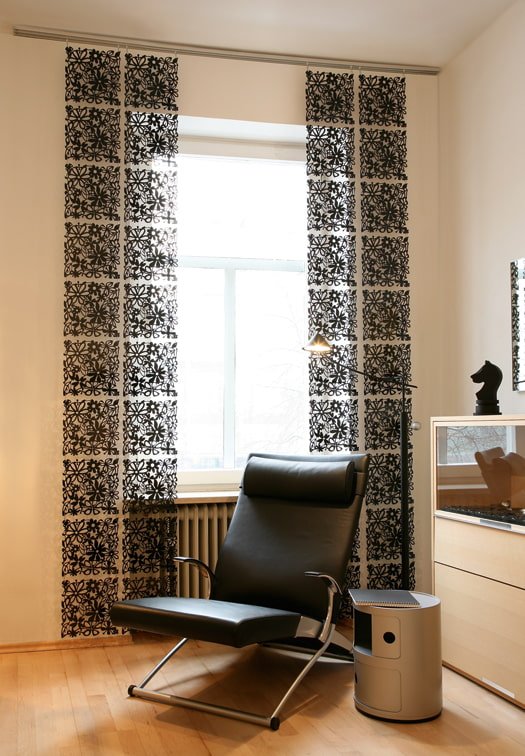
Sakura
Japanese cherry depicted on the canvases will create a unique blooming effect in the room. Due to their delicate shades, curtains with sakura will look most harmonious in an interior made in brown, beige, turquoise or gray.
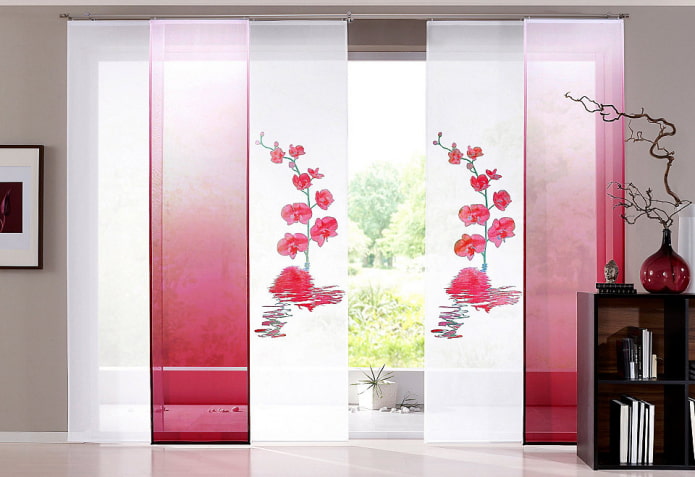
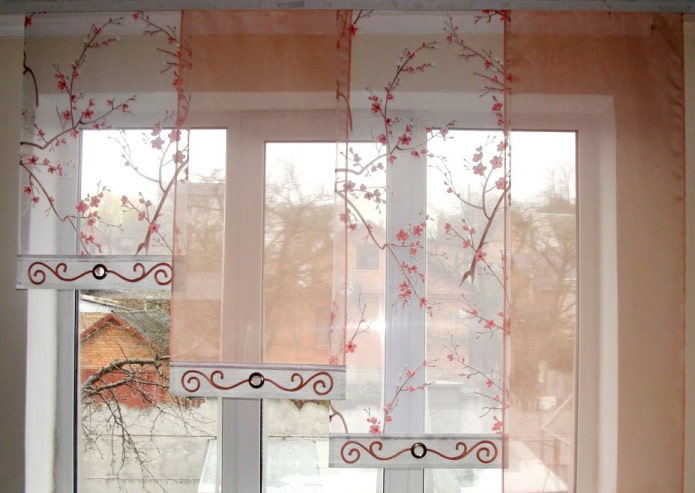
With a transparent center
An exquisite transparent center, in in combination with dense side parts will support the overall style of the room. This option is suitable for rooms that do not need to be hidden from ultraviolet rays.
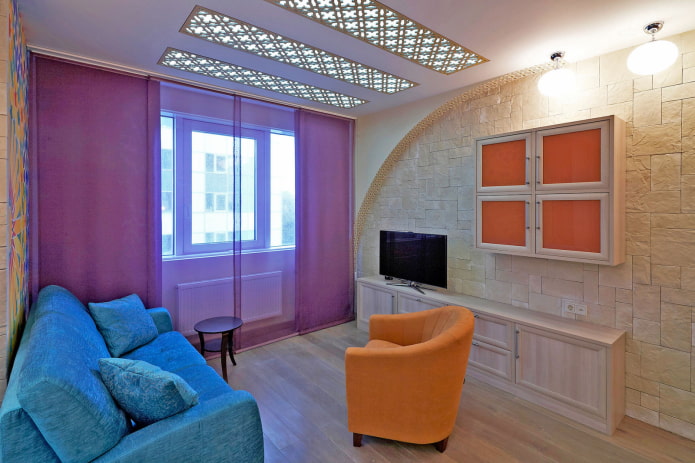
Geometry
The variety of this pattern allows it to be used in absolutely different rooms. Abstraction, stripes and strict squares will fit well into the minimalist design of a small room and add spaciousness and originality to it.

The photo shows Japanese curtains with geometric print in the interior of the office.
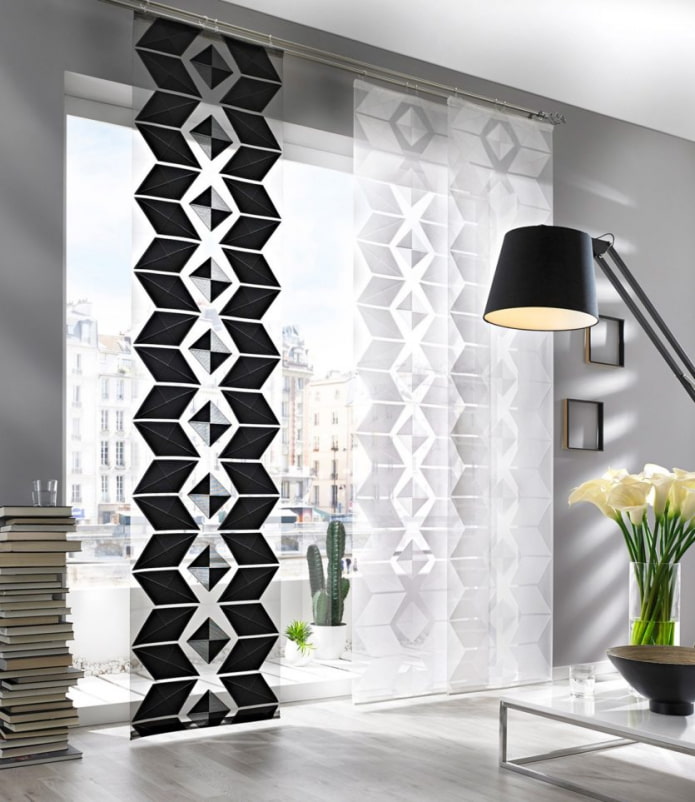
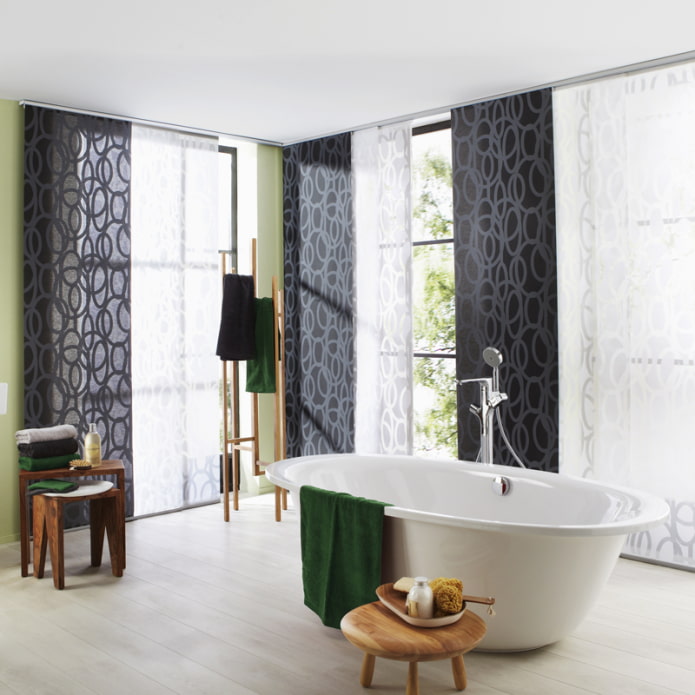
Photo print
They resemble screens, look like photo curtains, so realistic drawings on them look great. They help to create a non-trivial and memorable interior.
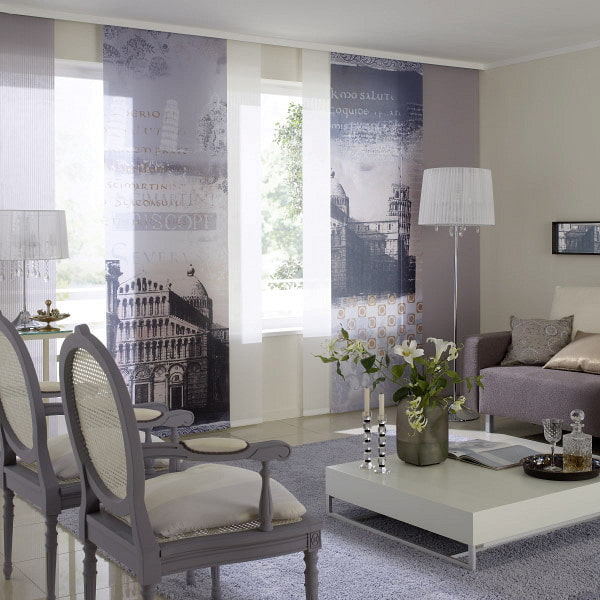
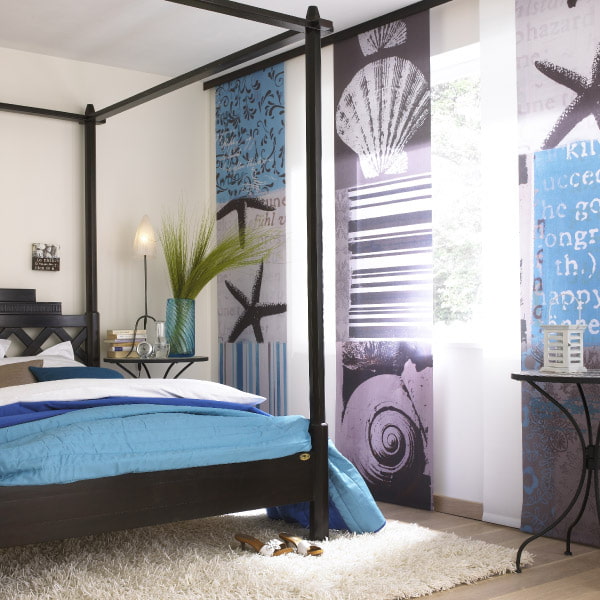
Style solution
These canvases are also able to organically and beautifully fit into different interior styles.
Ethnic style
Rich colors, various patterns and ornaments are the main defining features of this style. The main thing is that the chosen curtains match the overall interior of the space. Natural materials and light transparent products are suitable.
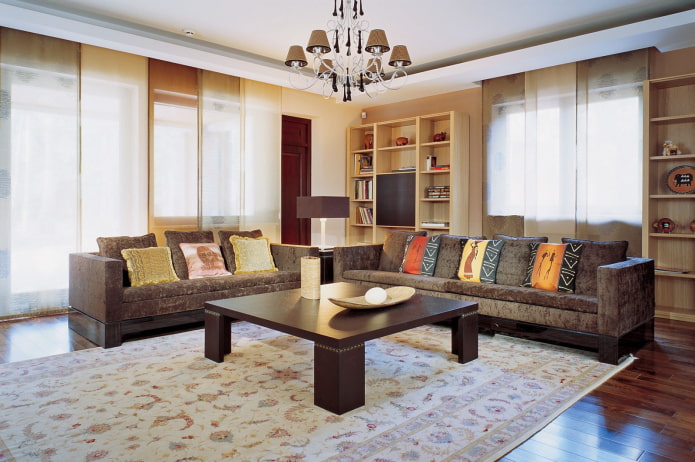
The photo shows a hall in ethnic style with windows decorated with Japanese canvases.
Minimalism
Here the emphasis is on the abundance of light and space. Therefore, special attention is paid to the selection and design of curtains. Modesty and simplicity of panel curtains are quite consistent with the spirit of this style.
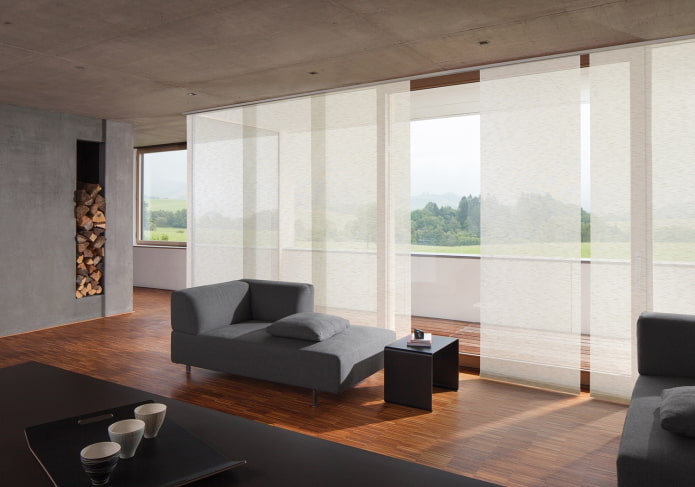
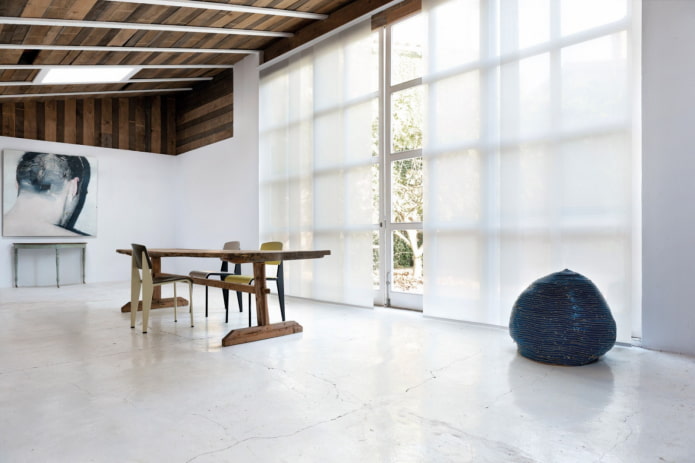
Oriental
The interior should be as natural as possible, dividing the space with miniature screens, a minimum of furniture, straw mats and an abundance of accessories.
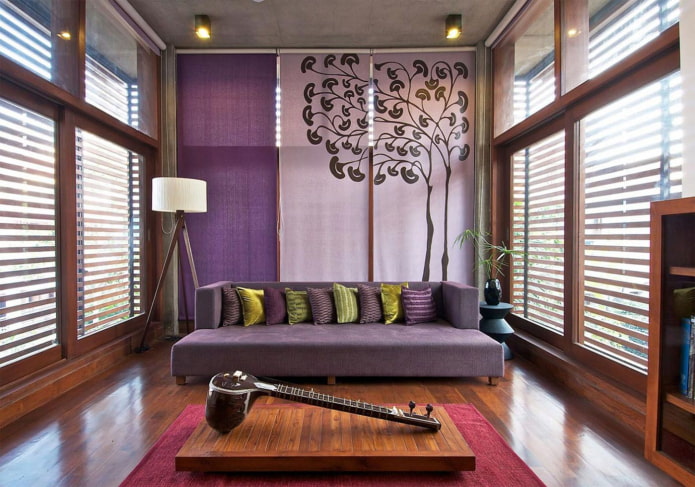
The photo shows the interior of the living room in oriental style with Japanese curtains on the window.
Eco
Heavy and expensive fabrics are not used in the design of this style. Neutral shades or Japanese jute curtains look especially harmonious.
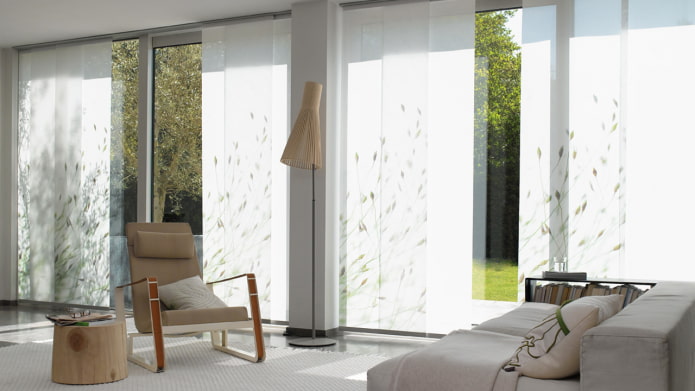
Modern
The modern style is characterized by laconic lines and clear shapes, as well as glossy textures, metal details, rough wood and smooth leather. Japanese window panels are suitable here, since the absence of draperies gives them a particularly neat and compact look.

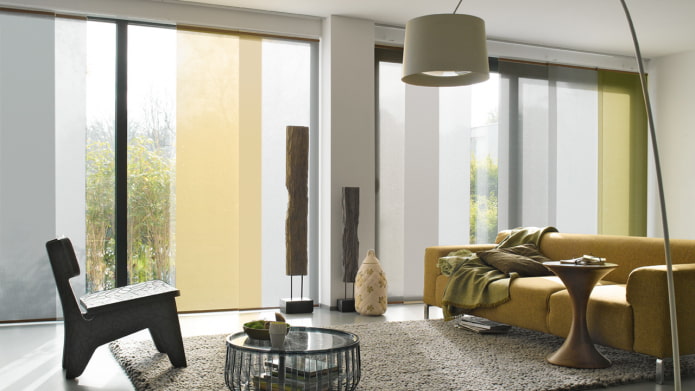
High-tech
The uniqueness of this style is in its rigor and functionality. Japanese curtains with geometric prints will emphasize the progressiveness of views, the modernity of the interior and will find a response in the decoration or furniture.
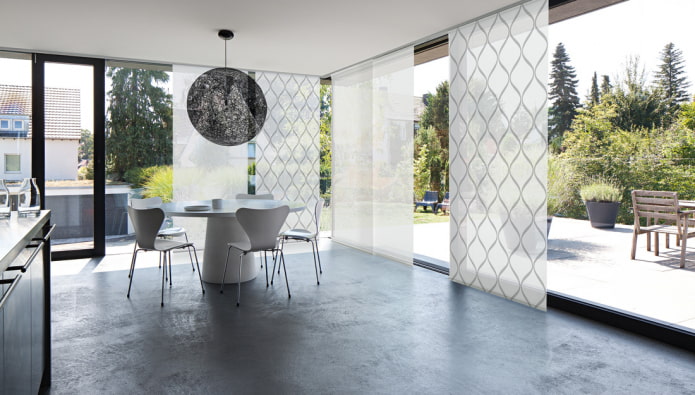
Options for combining Japanese panels
Japanese canvases are undoubtedly a decoration of the entire room and also have successful combinations and combinations.
With curtains (tulle, veil, etc.)
Light and translucent curtains look great in combination with Japanese curtains. It is possible to combine even several types of curtains on one window.
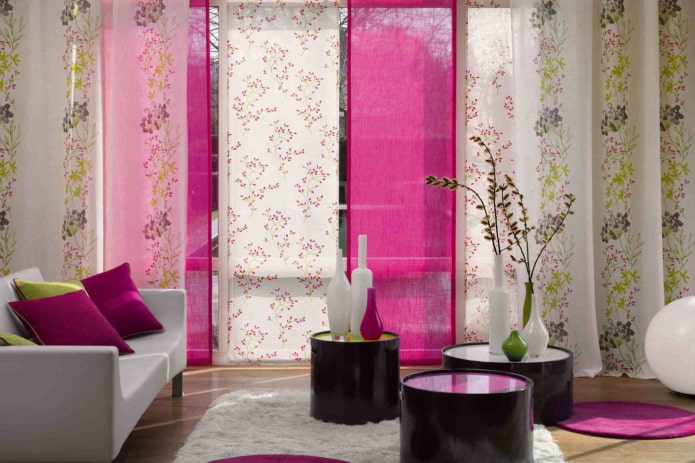
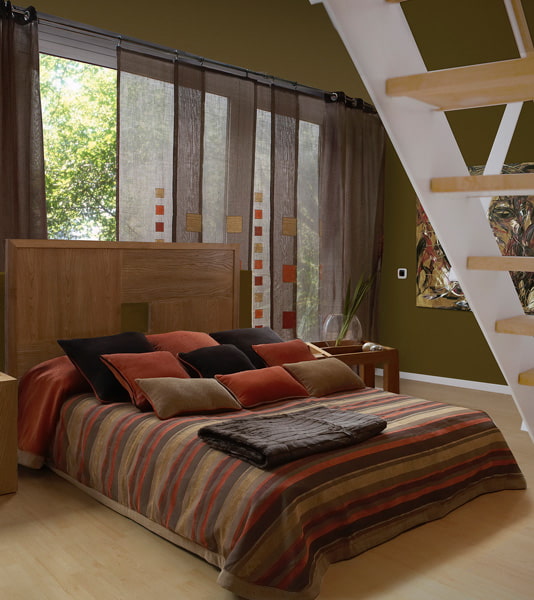
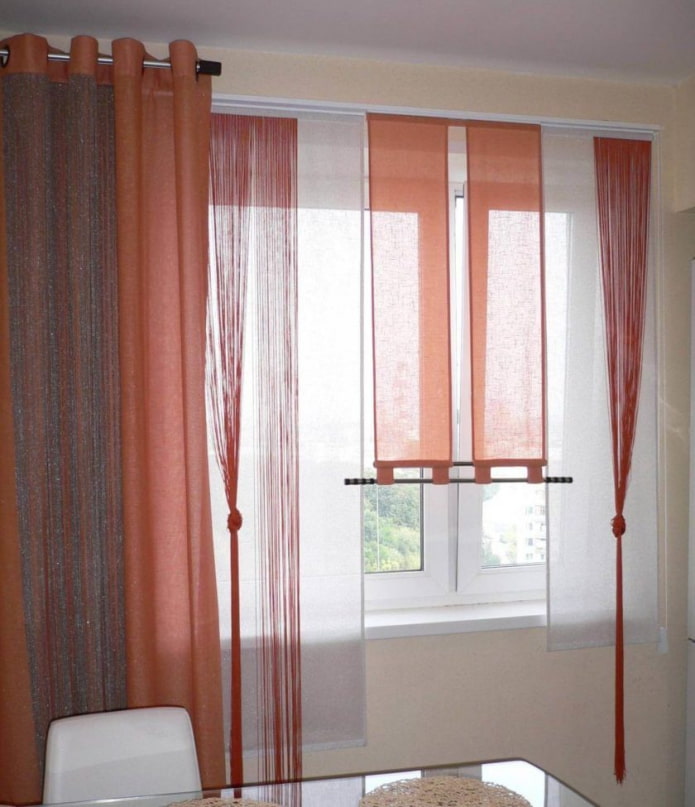
Different lengths
A great way to give your home a unique look without much expense. This option is suitable for decorating a window with a balcony door.
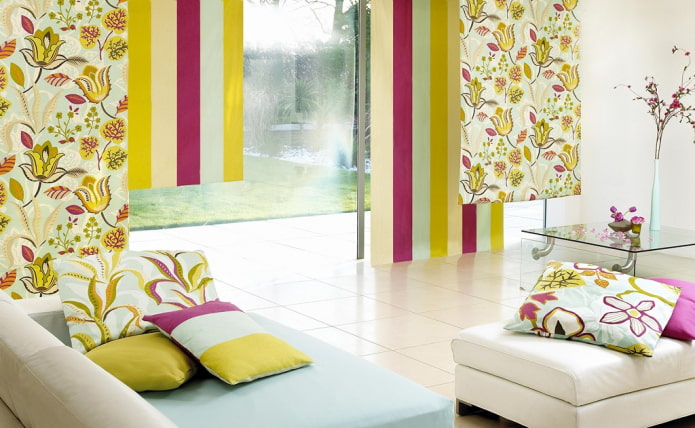
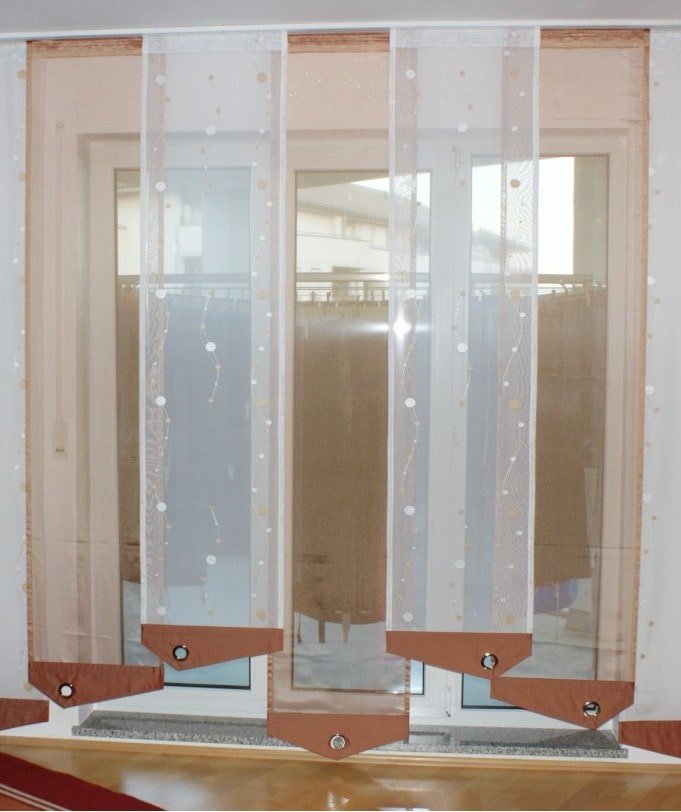
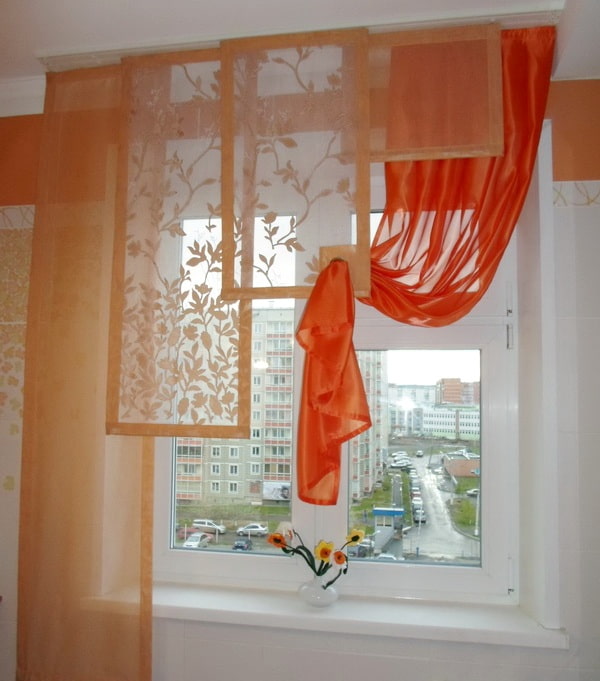
Multicolored
They set a special mood for the entire interior and make the room bright and individual.
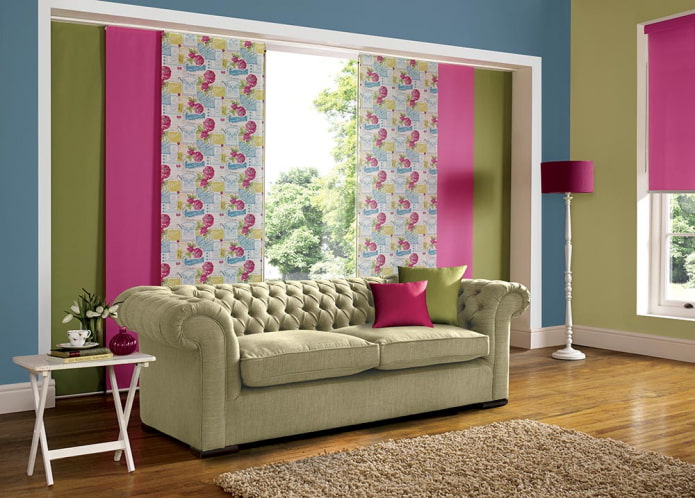
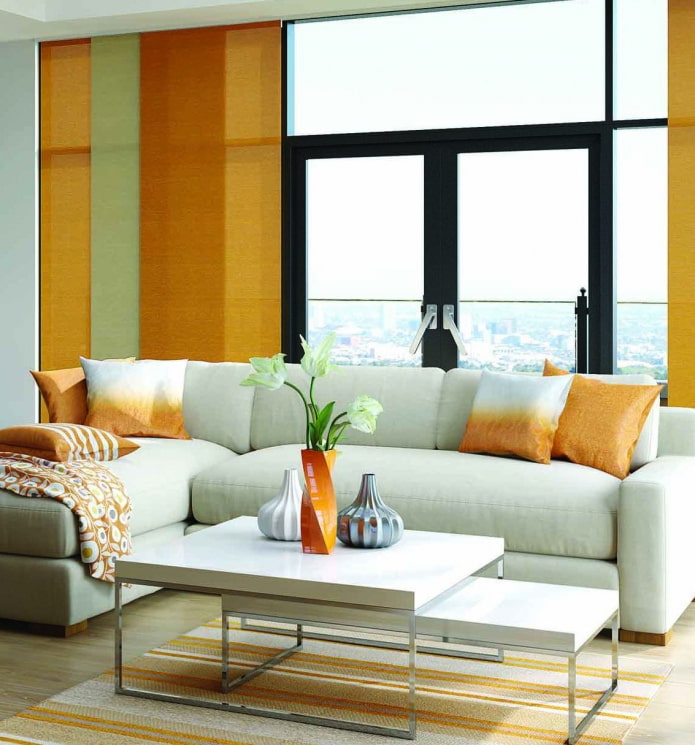
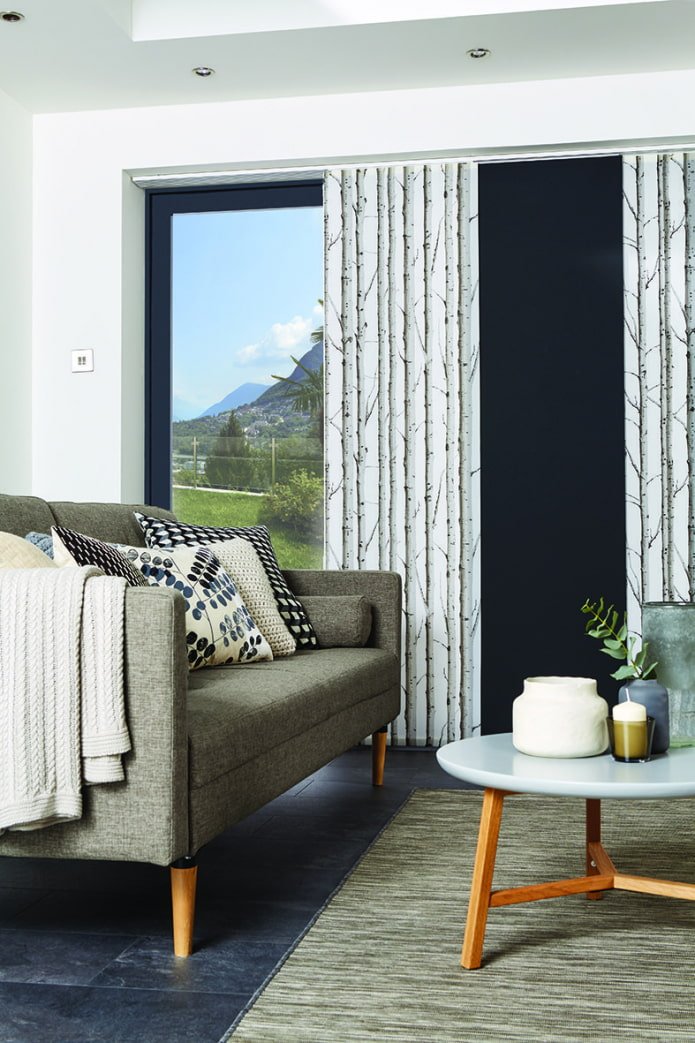
Non-standard use
Japanese curtains are universal. They can be used not only in decorating the window opening.
As partitions
Sometimes multifunctional rooms need space zoning. For example, a kitchen combined with a dining room, or a bathroom combined with a toilet. With the help of Japanese panels, you can easily and conveniently divide such rooms into independent sections.
See more examples of how to effectively use Japanese curtains to divide a room.
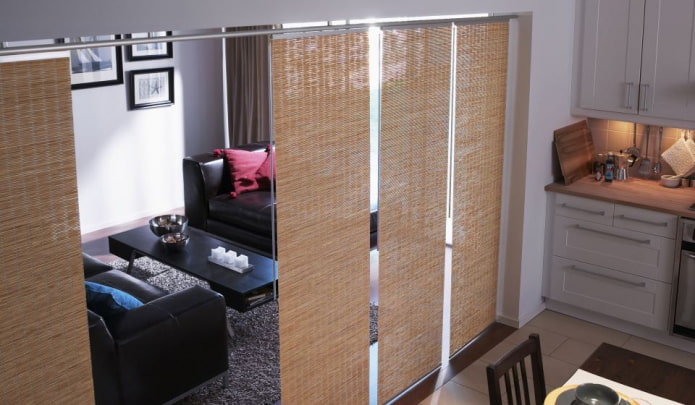
The photo shows a living room combined with a kitchen and Japanese panels as partitions.
Instead of closet doors
This option is suitable for saving space in small bedrooms. They do not clutter the room and look weightless.
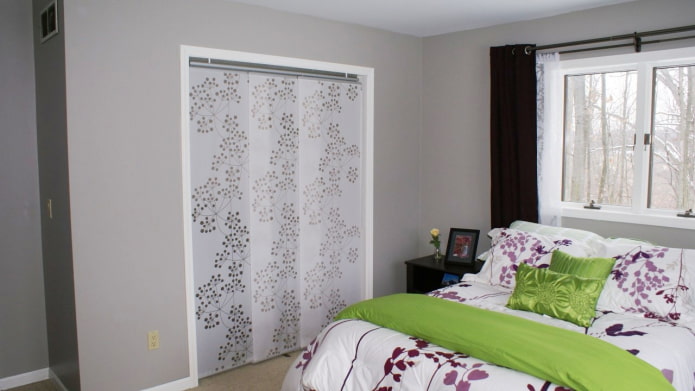
Types of curtain rods
Before decorating the room with curtains of this type, first of all, you should decide on the choice of curtain rod.
Track
A convenient option, mounted on a wall or ceiling. They can be two, three, four or even five-row.
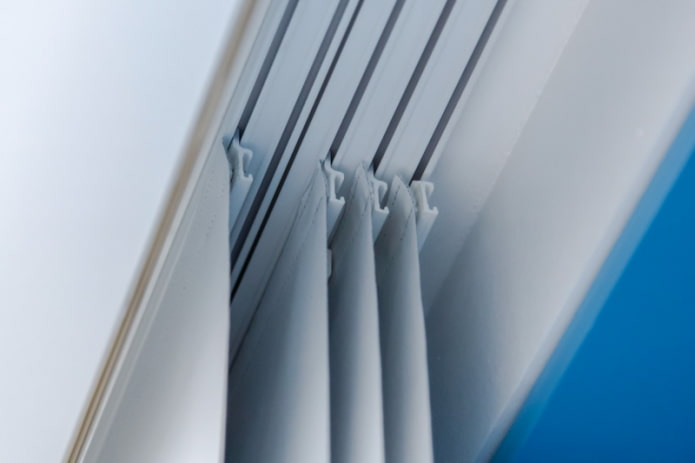
Tubular
A classic and universal option for all interiors. Made of plastic, metal or wood. Curtains are attached to the cornice by means of rings or fabric loops.
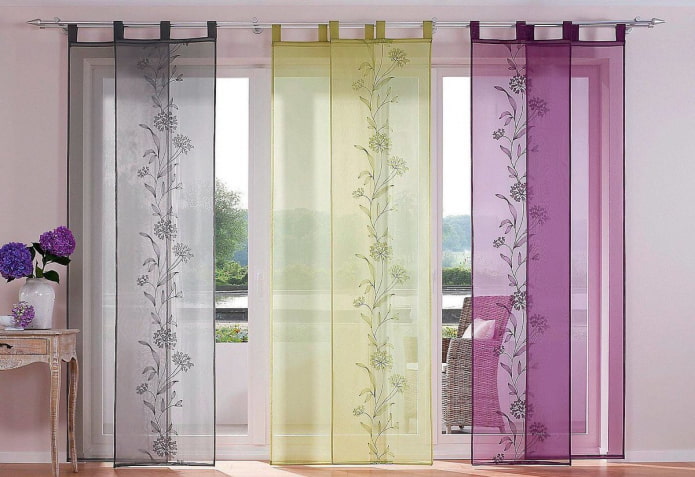
Types of control
For ease of use, there are several types of control for Japanese curtains.
Manual
The panels are moved manually, without the use of additional devices. When the control panel is moved, the other panels also start moving. Using the “free” option, you can move each panel separately.
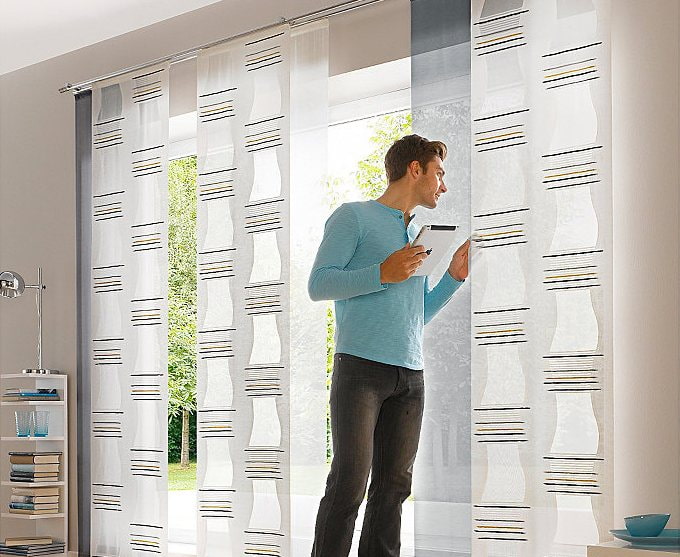

Cord
Control using a rope, cord. It does not make the curtain structure bulky and allows you to conveniently and easily adjust the flow of light in the room.

With a rod
Similar to manual. When the control panel is moved, the other panels also start moving. Allows you to control the curtain structure without touching the fabric.

Care and cleaning rules
Care for Japanese curtains depends on the selected material.
- Fabric panels can be washed in a washing machine, taking into account the instructions.
- Plastic options can be washed with a sponge and soapy water.
- For curtains made of bamboo, wood and other exotic materials, cleaning with a vacuum cleaner will be enough.
How to attach?
When installing, you need to take into account all the nuances. After all, nothing should hinder the free movement of the panels. Step-by-step instructions for attaching curtains:
- Select a curtain rod of the appropriate width and install it in the desired location.
- Attach the curtain brackets to the curtain rod.
- Hang the required number of Japanese panels. Their number depends on the type of curtain rod chosen.
- Attach special weights to the panels to prevent unwanted folds.
- Check the functionality of the mechanism and the curtain structure as a whole.
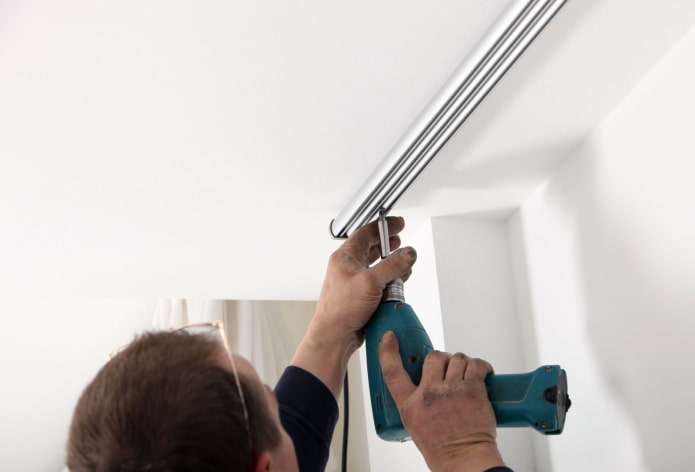
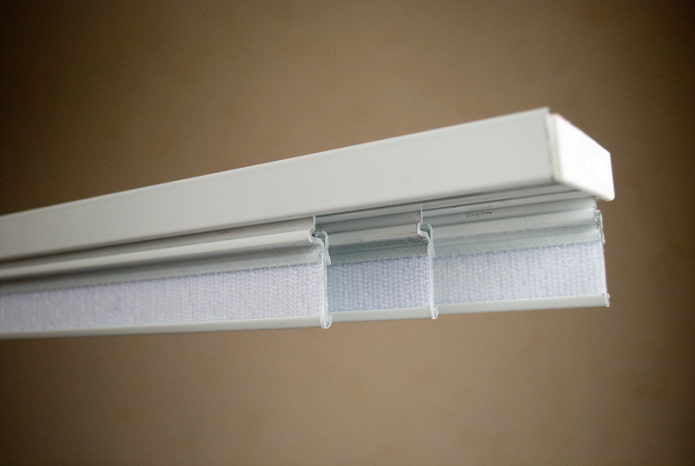
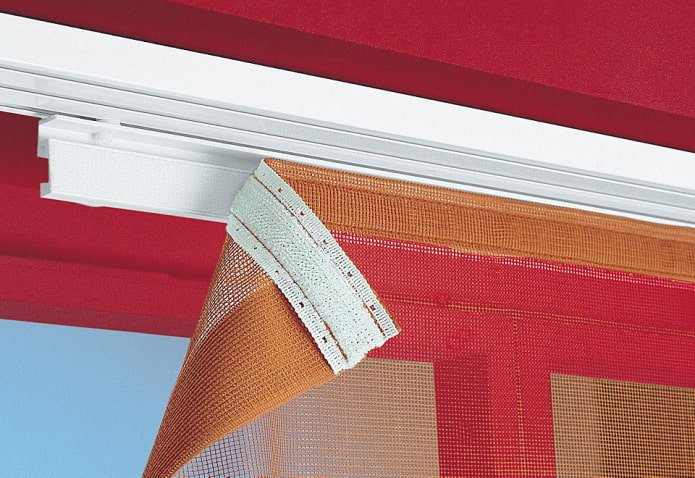
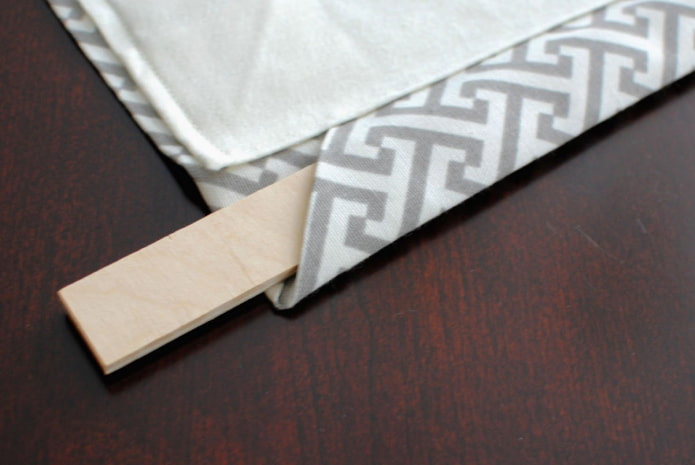
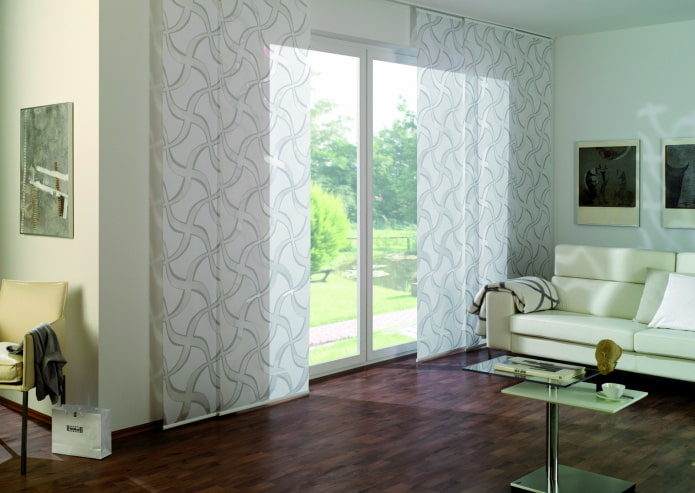
Now reading:
- Wardrobes for children’s rooms: more than 60 photos and ideas for boys and girls
- Wallpaper for decoration: more than 55 photos in the interior of the kitchen, hallway and bedroom
- Walk-through living room design ideas: furniture arrangement and zoning (34 photos)
- Volkswagen CC and Arteon Models: Sleek Performance Cars
- 27 large indoor plants with pictures and names – the tallest and broadleaf ones.